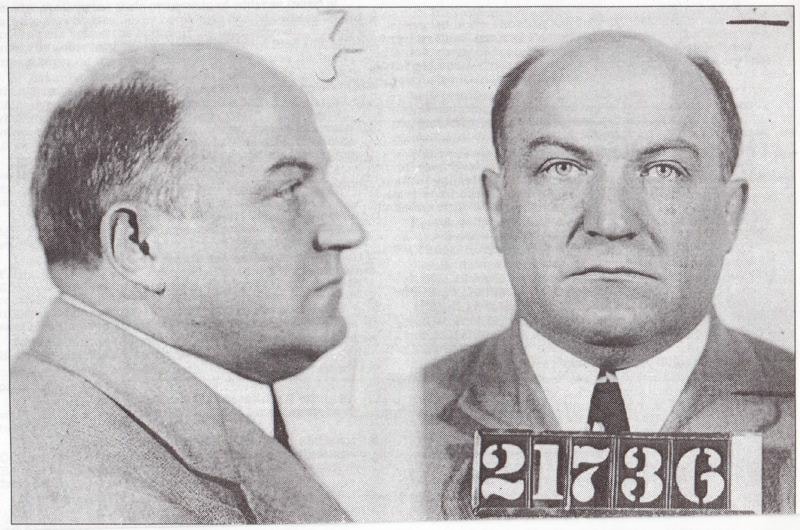Only 10 Days Until 100th Anniversary of Prohibition!
On January 17, 2020, the nation went dry...at least legally!
Media Alert: 100th Anniversary of Volstead Act Implementation Centennial of Law that Launched Prohibition and the Roaring Twenties, Rampant Lawlessness, American citizens transformed into Criminals
This is a once-in-a-lifetime chance to examine the day the nation went dry and the tremendous consequences it had on the rest of American history.
What: The Volstead Act, enacted into law on October 28, 1919, defined the parameters of the Eighteenth Amendment. By passing the Volstead Act, Congress formally prohibited intoxicating beverages; regulated the sale, manufacture, or transport of liquor; but still ensured that alcohol could still be used for scientific, research, industrial, and religious practices.
When: Congress voted to overrule President Woodrow Wilson’s veto, passing the Volstead Act on October 28, 1919. Legal enforcement of Prohibition began on January 17, 1920.
Why: Chaos reigned in the early twentieth century. In America, the tumultuous era included millions of immigrants streaming into the nation, and then a protracted war that seemed apocalyptic. The backlash against the disarray sent some forces searching for normality. Liquor was an easy target. Supporters of dry law turned the consumption of alcohol into an indicator of widespread moral rot.
Bob Batchelor, author of The Bourbon King: The Life and Crimes of George Remus, Prohibition’s Evil Genius (Diversion Books) is available for commentary and discussion of Prohibition and the Roaring Twenties. The Bourbon King is the epic tale of “Bootleg King” George Remus, who from his Gatsby-like mansion in Cincinnati, created the largest illegal liquor ring in American history. In today’s money, Remus built a bourbon empire of some $5 to $7 billion in just two and a half years.
People all over the world know the name “Al Capone,” but without George Remus and his pipeline of Kentucky bourbon, there may never have been a Capone. Although largely forgotten today, Remus was one of the most famous men in American in the 1920s, including the shocking murder of his wife Imogene and subsequent high-stakes trial that set off a national sensation.
QUOTES:
George Remus: “My personal opinion had always been that the Volstead Act was an unreasonable, sumptuary law, and that it never could be enforced.”
George Remus: “I knew it [the Volstead Act] was as fragile as tissue paper.”
F. Scott Fitzgerald: “America was going on the grandest, gaudiest spree in history…The whole golden boom was in the air—its splendid generosities, its outrageous corruptions and the tortuous death struggle of the old America in prohibition.” From the essay “Early Success” (1937)
Bob Batchelor: “Prohibition turned ordinary citizens into criminals. Media attention turned some criminals into Jazz Age icons. At the top of the heap stood those few, like George Remus, who took advantage of the new illegal booze marketplace to gain untold power and riches.”
Bob Batchelor: “During Prohibition, ‘bathtub gin’ often contained substances that were undrinkable at best and deadly at worst. A band of rumrunners selling ‘Canadian’ whiskey were actually peddling toilet bowl cleaner. Tests on booze obtained in one raid revealed that the liquor contained a large volume of poison.”
Bob Batchelor: “Remus may have been singularly violent and dangerous, but his utter disregard for Prohibition put him in accord with how much of American society felt about the dry laws. Within the government, the lack of resolve for enforcing Prohibition started at the top with President Warren G. Harding and his corrupt administration.”
“Bob Batchelor’s The Bourbon King: The Life and Crimes of George Remus, Prohibition’s Evil Genius might as well be the outline of a Netflix or HBO series.”
– Washington Independent Review of Books
Two interviews that provide an overview conducted with national, well-respected interviewers:
https://www.iheart.com/podcast/53-history-author-show-27301458/episode/bob-batchelor-the-bourbon-king-49050931/
https://soundcloud.com/leonard-lopate/bob-batchelor-on-his-book-the-bourbon-king-about-infamous-bootlegger-george-remus-9319
ABOUT BOB BATCHELOR
C-SPAN 2’s Book TV:
Bob Batchelor is a critically-acclaimed, bestselling cultural historian and biographer. He has published widely on American history and literature, including books on Stan Lee, Bob Dylan, The Great Gatsby, Mad Men, and John Updike. Bob earned his doctorate in English Literature from the University of South Florida. He teaches in the Media, Journalism & Film department at Miami University (Oxford, Ohio) and lives in Blue Ash, Ohio.
ABOUT THE BOURBON KING
Critics have called The Bourbon King "riveting," "definitive," and "rollicking," among other accolades. This is THE story of Jazz Age Criminal mastermind George Remus!
“The fantastic story of George Remus makes the rest of the ‘Roaring Twenties’ look like the ‘Boring Twenties’ in comparison. It’s all here: murder, mayhem—and high-priced hooch.”
—David Pietrusza, author of 1920: The Year of the Six Presidents
“Guns, ghosts, graft (and even Goethe) are all present in Bob Batchelor’s meticulous account of the life and times of the notorious George Remus. Brimming with liquor and lust, greed, and revenge, this entertaining book might make you reach for a good, stiff drink when you’re done.”
—Rosie Schaap, author of Drinking with Men
“The Bourbon King is a much-needed addition to the American mobster nonfiction bookshelf. For too long, George Remus has taken a backseat to his Prohibition-era gangster peers like Lucky Luciano and Al Capone. Read here about a man who intoxicated the nation with a near-endless supply of top-shelf Kentucky bourbon, and then got away with murder.”
—James Higdon, author of The Cornbread Mafia: A Homegrown Syndicate’s Code of Silence and the Biggest Marijuana Bust in American History
“Al Capone had nothing on George Remus, the true king of Prohibition. His life journey is fascinating, a Jazz Age cocktail that Bob Batchelor mixes for readers within these pages. Remus went from pharmacist to high-profile defense attorney to bourbon king to murderer.”
—Tom Stanton, author of Terror in the City of Champions: Murder, Baseball, and the Secret Society That Shocked Depression-Era Detroit













